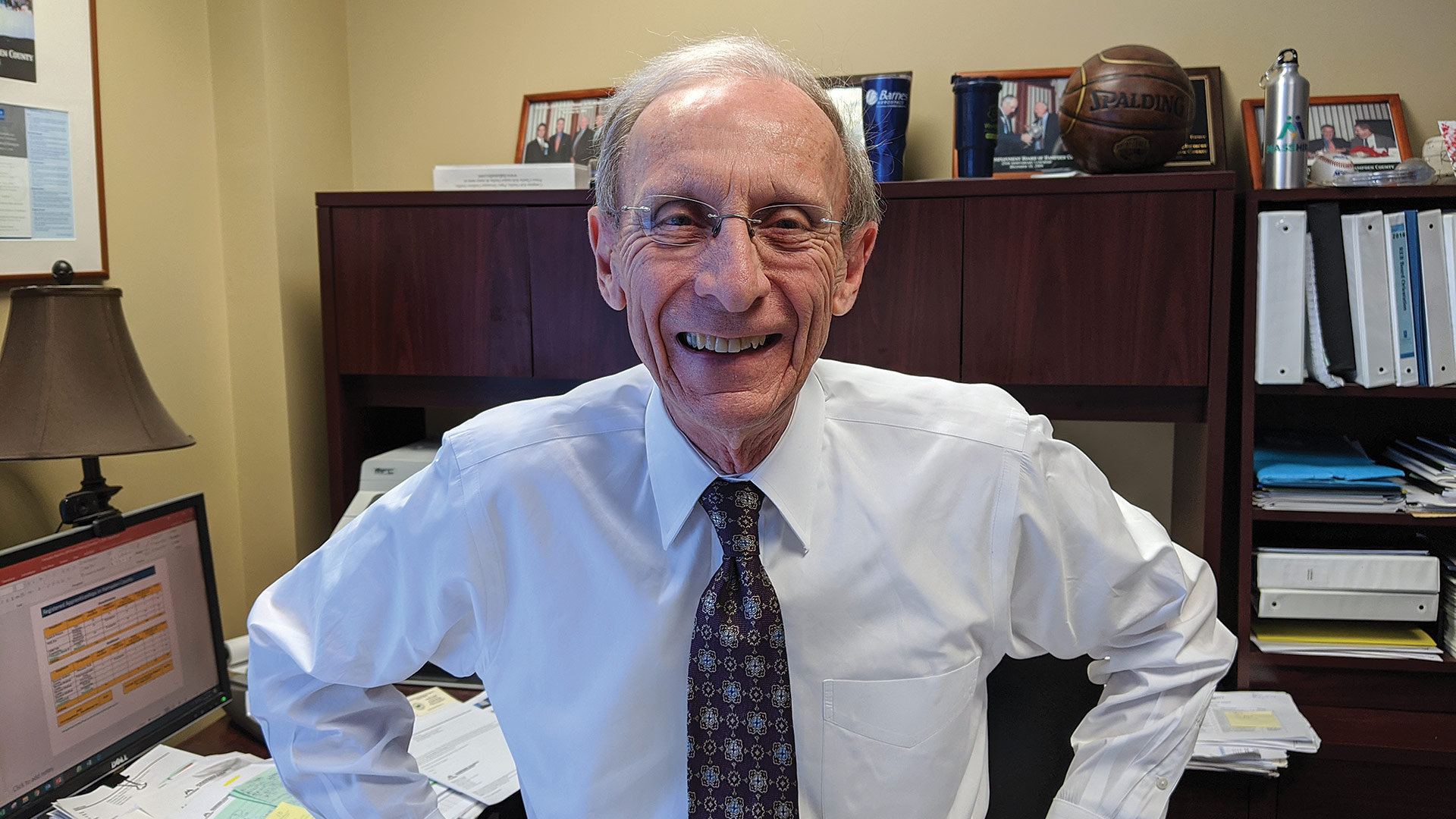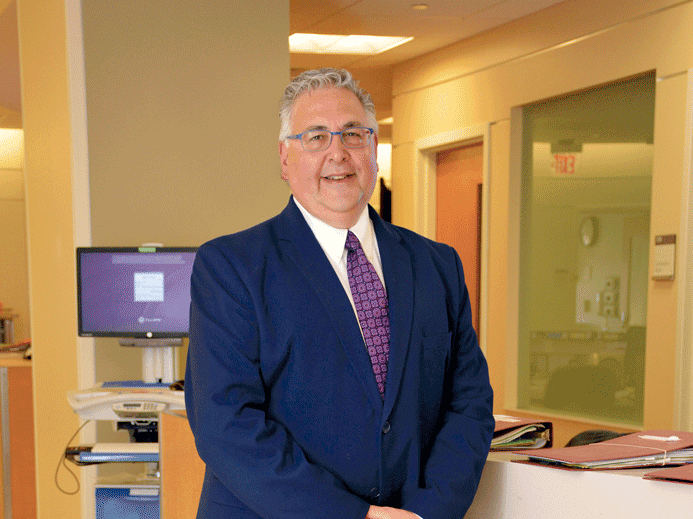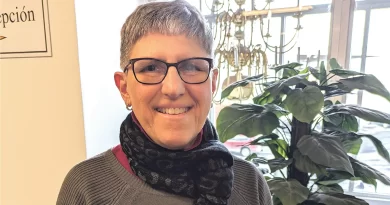Healthcare Workforce Needs Create Opportunity for Students
Challenging Prognosis
By Joseph Bednar
If college professors gauge success by how many of their students quickly find jobs, then Julia Chevan is in the right field.
“The demand is still there for physical and occupational therapy,” said Chevan, who chairs the Physical Therapy department at Springfield College — the ‘still’ being reflective of what has been a decade-long trend. “All of our students who graduated in May were employed within weeks of passing the national PT exam. Many were employed before they passed the exam, but my marker is how many have jobs after the exam — and they all had jobs straight out.”
That demand has raised the profile and popularity of PT and OT programs, including those at Springfield College, said Jean McCaffrey, associate professor of Occupational Therapy and the department’s field-work coordinator. “Our program is always at full capacity — there’s always a large surplus of applicants for the spots we have available for students, and there continue to be plenty of projected jobs due to demand for occupational-therapy services.”
In a recent report, the MassHire Hampden County Workforce Board and the MassHire Franklin Hampshire Workforce Board identified PT and OT as two of the ‘priority occupations’ in healthcare — a list that also includes registered nurse, licensed practical nurse, pharmacy technician, medical assistant, physician assistant, and patient-care technician. All those fields landed on the list due to a ‘supply gap’ in 2019. In other words, local demand exceeds the current supply.
With a generation of Baby Boomers still shedding their careers for retirement, those gaps could grow even larger. In fact, healthcare was one of three ‘priority industries’ — education and advanced manufacturing being the others — that the MassHire workforce boards identified in late 2018 as both critical to the region’s economic success and prone to persistent labor shortages.
Thus, they formed the basis of a comprehensive ‘labor-market blueprint’ which aims to narrow those gaps and help companies — and the overall economy — grow. A new report, issued just a few weeks ago, follows up on that blueprint, outlining the many ways employers, economic-development agencies, vocational and technical schools, area colleges, and other entities have partnered to do just that.
Needless to say, it’s a daunting challenge, said David Cruise, president and CEO of MassHire Hampden County.
“What we’re doing at the moment is actually going in and implementing the goals and strategies we laid out in the blueprint,” he explained. “One of the priority works we did was to identify, through looking at both supply and demand data, the three priority industries in Pioneer Valley region.”
The priority industries, including healthcare, have two things in common, he noted: long-term growth opportunities for individual companies and the sectors as a whole, and clear career pathways, where people cannot just land entry-level jobs, but steadily progress in their career from there.

“That’s why we’re spending a significant amount of time — and we’re very excited about the work we’re doing — with our regional education partners to make certain they’re developing programs and courses that align with those occupations, within those priority industries, that will allow someone to take courses and get into programs where there’s a pathway that will allow them to, yes, get a job, earn more money, and take care of their families, but also be able to see some pathway forward. That’s what we’re really focused on.”
Tougher Climb
The factors causing workforce shortages vary by sector, of course. In the case of physical and occupational therapy, for instance, an aging population is vastly increasing demand for rehabilitation services, while the education requirements to work in those fields have vastly changed. While OTs can pursue either a master’s or doctorate track, PTs are required to earn doctorates. Nursing has seen a similar evolution.
“One of the priority works we did was to identify, through looking at both supply and demand data, the three priority industries in Pioneer Valley region.”
“Some of it has to do with the amount of material and knowledge required to be in practice, and especially because the therapy profession now involves making more and higher-level decisions. That’s one piece of it,” Chevan said. “It’s amazing how much students need to know to be a practicing physical therapist.”
Whatever the reasons, the MassHire blueprint examined how area educational institutions — mainly vocational and technical high schools and community colleges — to get a feel for how their programs are meeting those career demands.
“We did an analysis of the educational programs and pathways and courses that are really aligned with these occupations within these priority industries,” Cruise said. “We’re asking, ‘where are the gaps?’”
The report — which provides plenty of detailed evidence that training and degree programs are available in all these fields — will be updated every two years, with the hope that such programs will continue to expand and adapt to evolving workforce needs.
“We’re trying to fashion a regional workforce response as opposed to trying to fashion a workforce response in Hampden County or in Hampshire-Franklin. We want to look at a regional response,” Cruise said. “We think it makes more sense, and we have a better chance at mitigating the supply gap if we combat it that way.”
One intriguing development involves making connections with comprehensive high schools in the region, he went on, recognizing that the state has been innovative in making career-development opportunities available to non-vocational high schools.
“We’re doing a lot of work with these school districts. They’ve made a decision that they want their students to have career-awareness and career-focus opportunities that will allow their students to look at different career pathways. Whether they’re going on to a two- or four-year college or directly to work, they want them to be more knowledgeable about what those requirements are, what the pathways look like.”
To that end, the regional workforce boards have sent information to area superintendents about hiring needs and opportunities in the priority sectors and what students need to do to access them.
“In the next few weeks, we’ll send more information to the schools that will be very helpful to superintendents, counselors, and teachers, to help them provide guidance to their students — and also the parents — around career pathway opportunities. We’re really excited about that, and I’m convinced that, over time, students and parents will be making better career decisions.”
“We’re trying to fashion a regional workforce response as opposed to trying to fashion a workforce response in Hampden County or in Hampshire-Franklin. We want to look at a regional response. We think it makes more sense, and we have a better chance at mitigating the supply gap if we combat it that way.”
Occupational therapy is one field in which the career options have only become more attractive to students, McCaffrey said, if only because they’re so broad.
“We cover every population from school-based to community mental-health services to physical rehabilitation, and so many things in between. We help people return to work and focus on what they need in everyday life. We can treat newborns all the way up to people in their 100s.”
That’s why Springfield College’s OT program gives students exposure to all age ranges, as well as many practical applications in a variety of settings. “Our connection to our community is really important — we have great community partners. It allows students to experience what it’s like to interact with a lot of different populations — community health centers, schools, rehab.”
Because healthcare has become so interconnected — in the accountable-care era, providers from different disciplines increasingly collaborate on patient treatment — the program also connects OT students with other health-education professionals at the college, McCaffrey noted.
Chevan agreed, adding that physical therapists, too, work in a greater variety of settings than hospitals and skilled-nursing facilities, although they’re still in demand there as well.
“You want to produce graduates and fill the retirements and increased demand as the population ages,” she told HCN, adding, however, that New England as a region has done a good job producing those graduates, meaning they might find demand higher in other areas of the country. “Some people need to be ready to change their geography for the right job, but the jobs are out there.”
Knowledge Is Power
Rather than create a more daunting path to a career, Chevan says the advanced degree requirements to enter the PT and OT fields are reason for excitement.
“Why are people excited about physical and occupational therapy? Because these are areas where the knowledge base has exploded. The science behind it is phenomenal — with what we now understand about aging, about pain science, all the research about rehabilitation, it’s been an expansion of knowledge, and we need to have students more grounded in the science.”
As one means of smoothing career pathways in healthcare, MassHire has expanded its program of registered apprenticeships in healthcare (and advanced manufacturing as well), Cruise said. “We’re being very careful about making certain the funding that we have and how we deploy the money is clearly aligned with where the employers are telling us the demand is.
“The whole concept of going alone isn’t going to work anymore,” he went on. “You have to figure out a way to be in some collaborative partnerships where you can leverage resources, look at your assets, identify your gaps, and put in place opportunities and programs that will respond to that. We do that well out here. I’m not suggesting it’s not done well in other places, but we think we have a little bit of a copyright on that.”
Springfield College’s efforts to get students into community care settings is its own kind of partnership, McCaffrey noted. “We want them to have solid academics, but also engaged in the community we live in. We want our students benefiting from that. We recently did a fall-prevention clinic with PT and OT students. Those kind of programs with our community partners allow students to see what occupational therapists are doing and what kinds of clients they’ll work with.”
It’s gratifying, she added, so see occupational therapy expanding in places it hadn’t been as prominent before, like in the adolescent population — because that means more opportunity for career seekers.
“Services are expanding beyond what we’re used to seeing,” she noted. “It’s important that’s happening.”




